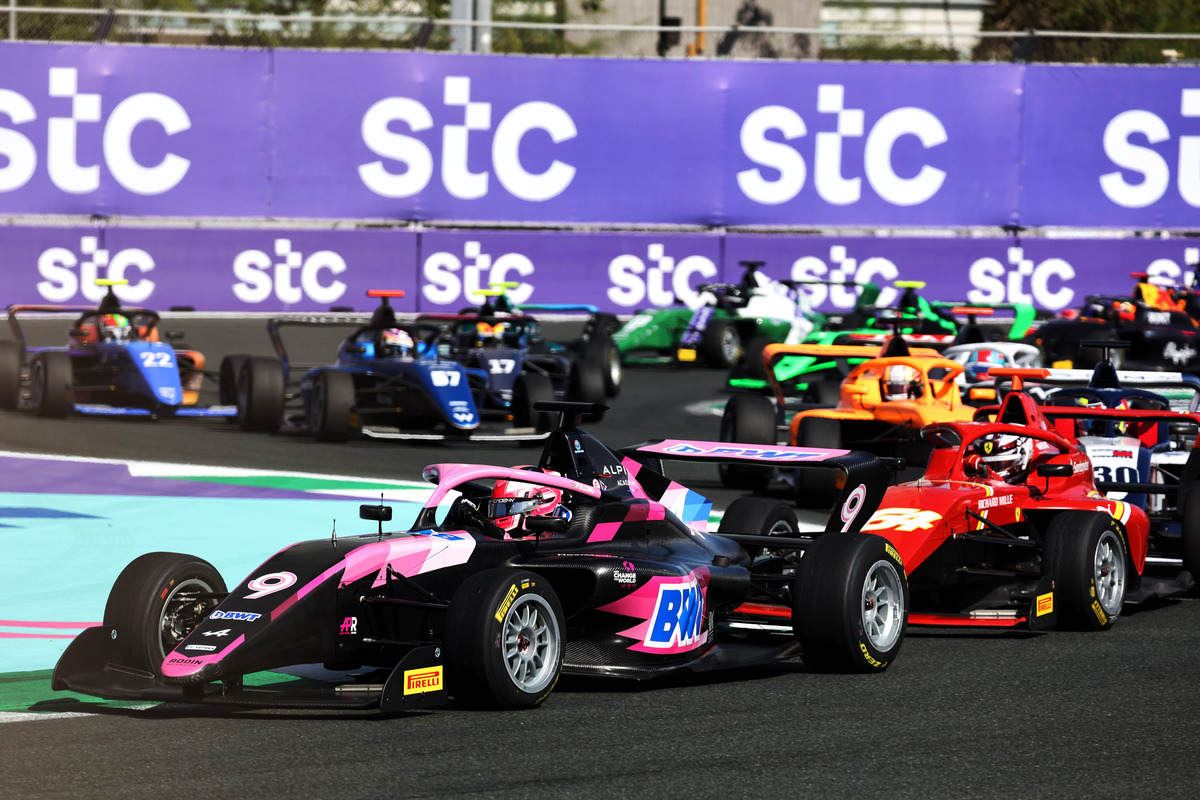

The F1 Academy is an all-female competition similar in many respects to the ill-fated W Series with the stated ambition of bolstering female participation in motorsport.
After debuting last year, this year’s championship boasts seven rounds supporting the Formula 1 world championship.
That link is more than skin deep, with Formula 1 Management owning the competition and all 10 F1 teams supporting a driver in it.
It’s a move designed to address the lack of female representation in motorsport through two means.
Primarily, it’s an avenue for aspiring drivers to progress through on the way up the ladder to the sport’s pinnacle, with F1 Academy designed to feed into the Formula 3 Championship.
The longer-term play is arguably the more important one as it creates visibility, breaking down barriers and encouraging more young female drivers into motorsport.
It complements off-track efforts such as the FIA Girls on Track programme, as run by Motorsport Australia, and the Susie Wolff-created Dare to be Different initiative.
“The interest is high,” Australian Grand Prix Corporation CEO Travis Auld confirmed to Speedcafe regarding hosting F1 Academy in Melbourne.
“There’s a conversation with Susie Wolff [managing director of F1 Academy].
“I know the state government, how invested they are in showcasing female participation in every sport and to have that at the elite level in F1 would be an incredible opportunity for us.
“That is the headline. Beneath that, there are challenges like everything else.”
Chief among the issues is that of scheduling over the Australian Grand Prix weekend, with track time at a premium in Albert Park given the presence of Formula 2, Formula 3, Supercars, and Porsche Carrera Cup on the support programme.
The latter is a mainstay of the event and is expected to remain because it offers an income stream to organisers.
Supercars is also expected to remain, though no contract is in place to see the touring car championship back in Albert Park for 2025 just yet.
Meanwhile, Formula 2 and Formula 3 have long-term contracts with the AGPC. However, they share common ownership with F1 Academy.
The working theory is rather than attempting to add another support category to an already jammed programme, one simply replaces the other.
The logic goes that F1 Academy would replace Formula 3, with the competitions alternating in future years.
The key, however, is making it stack up financially, with those on the F1 side of the fence keen to ensure Australia would be both financially viable, and additive.
Given the teams that operate F1 Academy all have a presence in F2 and F3, there is strong evidence to suggest that would not be an especially difficult equation.
The facilities and requirements of F3 could be largely transferred onto F1 Academy, the same going for logistical considerations.
It would almost certainly necessitate a modification of the current contract between AGPC and Formula 1, which is understood to mention Formula 2 and Formula 3 specifically.
It’s not a massive hurdle, but one that must be cleared.
But while there’s interest in bringing F1 Academy to Australia, detailed discussions on exactly how that would work have not yet begun.
This year’s F1 Academy began in Jeddah as part of the Saudi Arabian Grand Prix, with its second round in Miami in early May.
Next year’s F1 calendar is set to begin in Australia before taking in at least one Asian event before jetting to races in Bahrain and Saudi Arabia.
Should Melbourne not feature on next year’s F1 Academy calendar, its opening event is unlikely to occur before the first weekend of April – once Ramadan has ended and F1 can race in the Middle East.





















Discussion about this post